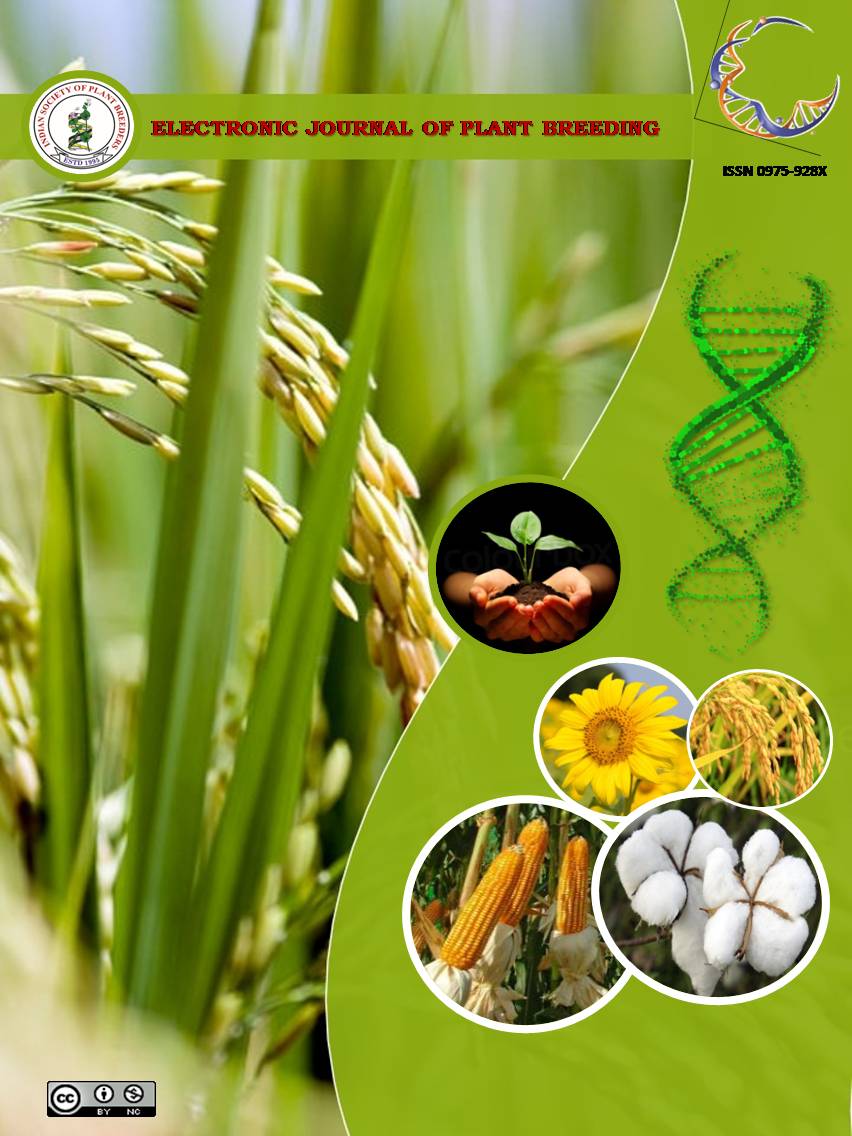Phenotypic evaluation and gene expression analysis of metal homeostasis genes in barnyard millet (Echinochloa frumentaceae) lines
Abstract
Barnyard millet, a versatile and multi-purpose crop, is nutritionally superior to other major cereals and it is known for the efficient accumulation of metals, mainly Fe. To study the phenotypic variation in different barnyard millet lines for selecting desirable phenotype with varying metal accumulation, a pot culture experiment was conducted with nineteen barnyard millet lines and screened at seedling, vegetative, flowering and maturity stages. The experiments were laid out in a completely randomized design with three replications. Out of nineteen lines screened, the increased plant height, total dry matter production, total chlorophyll content and nitrate reductase activity, was observed in the variety MDU1 and the performance of ACM-16-5 was comparatively lower. The results showed that performance of MDU1 and ACM-16-5 was significantly varied. Since, barnyard millet is an active accumulator Fe, gene expression study was carried out to unveil the transporters that are involved in Fe and Zn uptake and translocation at seedling and vegetative growth stages of MDU1, with rice (ASD16) as control. Of all six genes studied, the expression of NAS1, NAS2 and YSL2 in leaf of MDU1 at seedling and vegetative stages was variably expressed when compared to ASD16 and this could pave the way for enhanced metal uptake and its utilization in plant growth and development.

It is certified that:
- The corresponding author is fully responsible for any disputes arising due to the publication of his/her manuscript.
- The article has been seen by all the authors who are satisfied with its form and content.
- The sequence of names of authors in the by-line is as per their relative contribution to this experiment, giving due credit to all scientists who made notable contribution to it.
- All the authors fully understand that inclusion of any other co-authors or exclusion of any co-authors is not possible once the article has been submitted to the journal.
- The corresponding author takes full responsibility for this article.
- The address of the organization where the research was conducted is given.
- The article is exclusive for this journal, and the results reported here have not been sent (and will not be sent during its consideration by this journal) for publication in any other journal.
- Authors agree to abide by the objective comments of referees and do agree to modify the article into a short note as per the recommendation, for publication in the Electronic Journal of Plant Breeding.
- If published in Electronic Journal of Plant Breeding, the copyright of this article would vest with the Indian Society of Plant Breeders, who will have the right to enter into any agreement with any organization in India or abroad engaged in reprography, photocopying, storage and dissemination of information contained in it, and neither we nor our legal heirs will have any claims on royalty.


